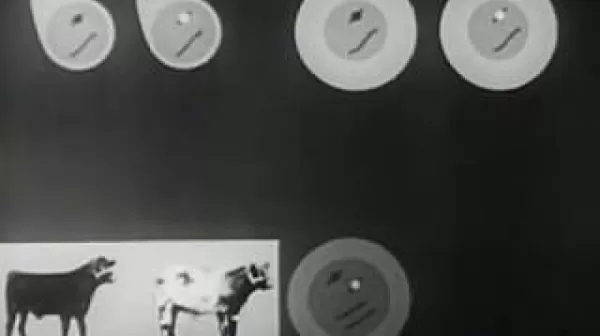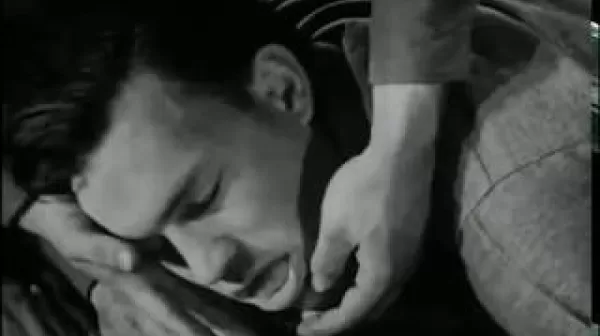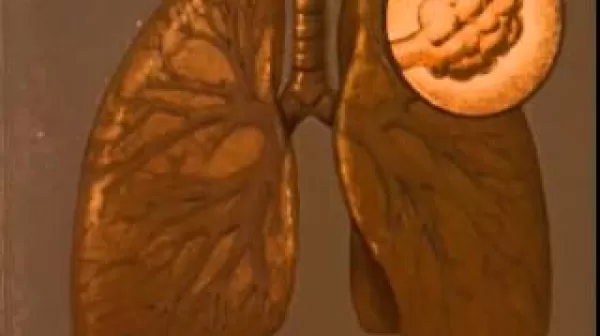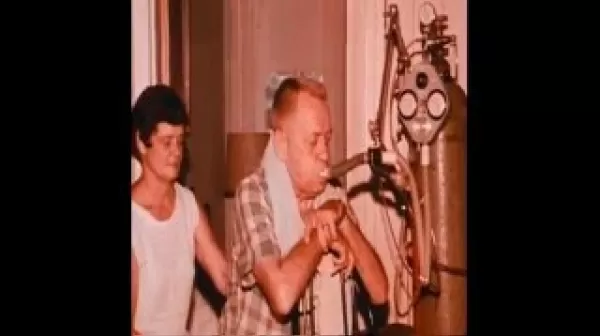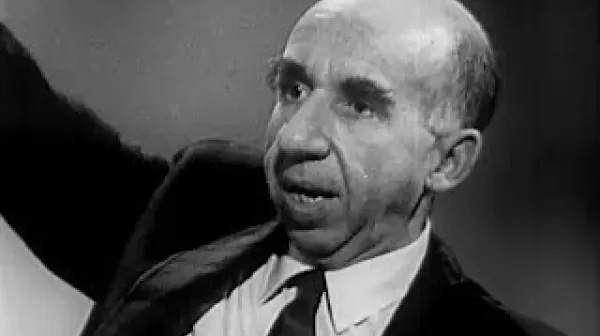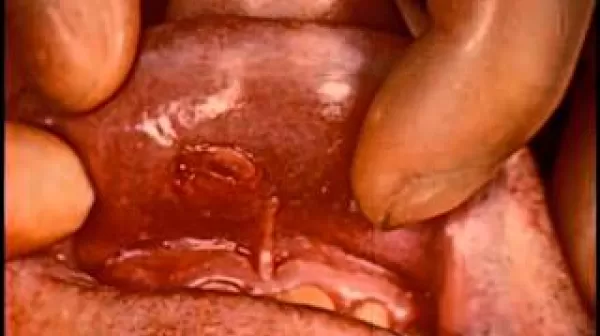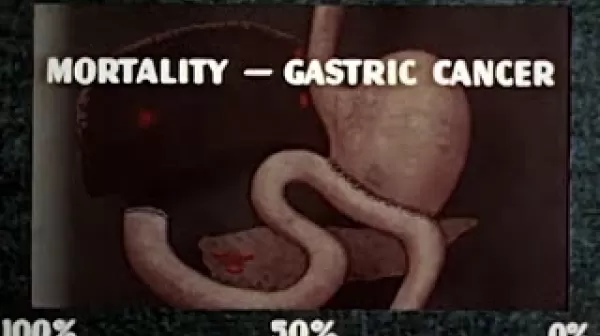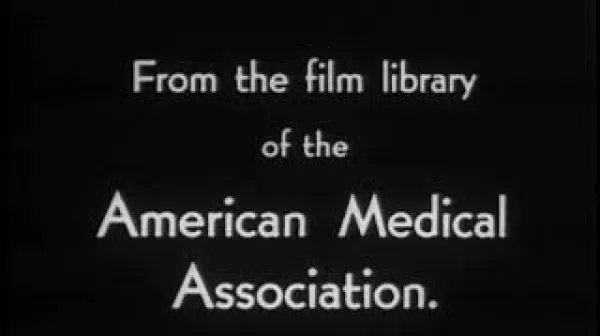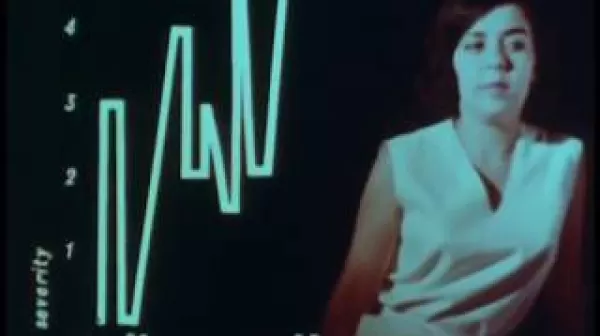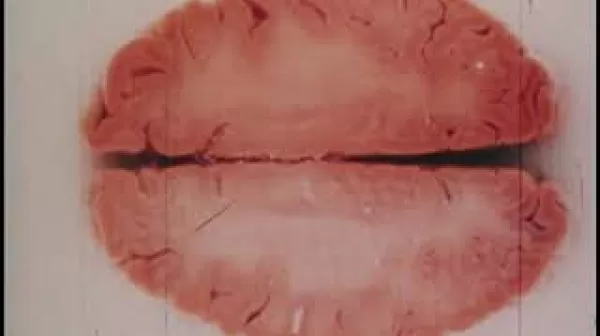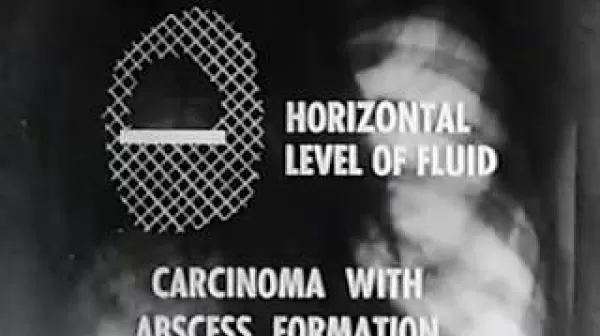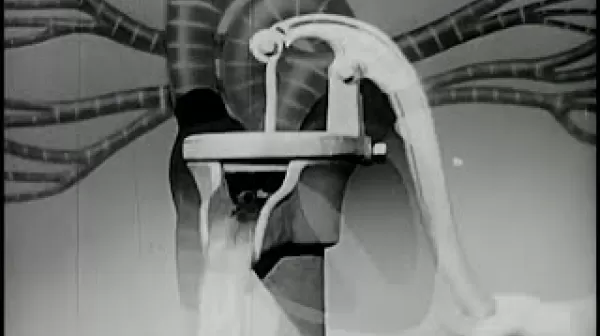Heredity (Encyclopaedia Britannica Films, 1939)
The mode of transmission of hereditary materials which are responsible for the inherited characteristics of all plants and animals is presented. Live action and animation are used to demonstrate what happens when the egg and sperm of red-coated and white-coated cattle meet to form the zygote and when mitosis occurs. Over animation superimposed on live shots of the resulting roan calf, the narrator explains how both sets of genes influence the color of this animal.

